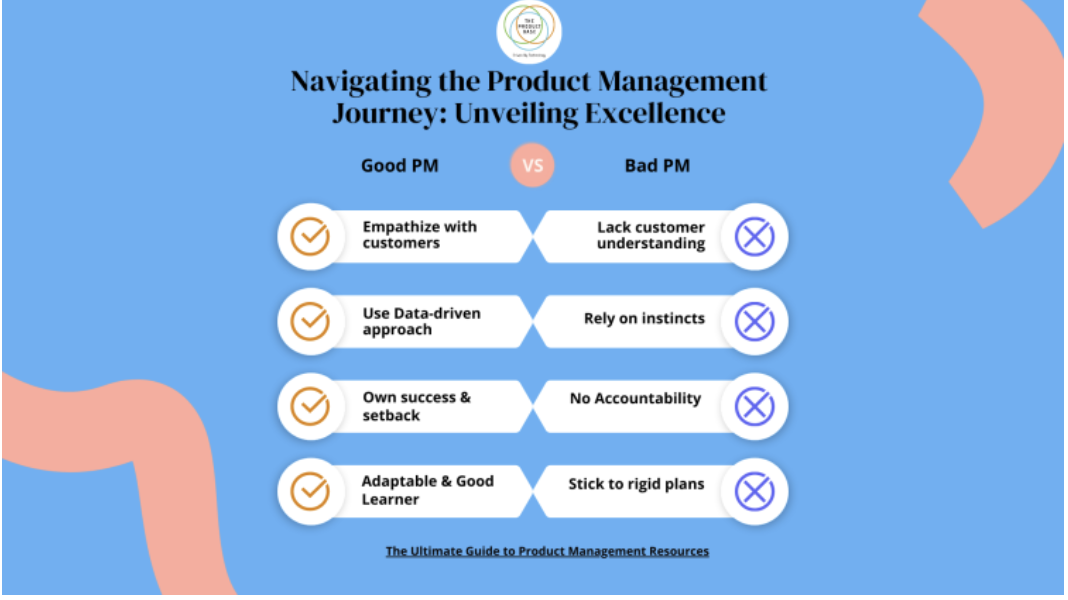Empathy and Customer Focus:
1. A good PM puts themselves in the shoes of their customers. They listen intently, empathize with pain points, and translate those insights into innovative solutions.
2. On the flip side, a bad PM can be internally focused, neglecting to truly understand the customer's perspective.
Data-Driven approach:
1. Good PMs use data to make informed decisions about their products, track metrics like user engagement, churn, and conversion rates to see what's working and what's not.
2. Bad PMs often rely on gut instinct or personal opinion when making decisions. This can lead to products that are not aligned with user needs or that don't meet business goals.
Ownership and Accountability:
1. A good PM takes ownership of their product's success. They're accountable for both triumphs and setbacks, learning and adapting from each experience.
2. A bad PM might point fingers when things go awry, instead of seeking ways to overcome challenges.
Effective Communication:
1. Good PMs excel in articulating their vision, aligning stakeholders and ensuring everyone is on the same page. They value clear communication as a bridge to collaboration.
2. In contrast, a bad PM might assume others understand their vision without proper communication, leading to misalignment and confusion.
EAdaptability and Learning:
1. A good PM embraces change and is always eager to learn from failures. They view setbacks as opportunities to iterate and improve.
2. A bad PM might resist change and stick rigidly to their original plans, even when evidence suggests adjustments are needed.
My big 4 differences between the top 10% of Product Managers and the top 1% of Product Managers:
Not afraid of failure:
1. They have failed before, and they know that failure is a part of the learning process.
2. This allows them to take risks and experiment, which is essential for creating game-changing products.
Strong understanding of both the big picture and the details:
1. They understand the market, the target user segment, the company strategy, and the competition.
2. They also understand the day-to-day constraints, compromises, and edge cases.
3. This allows them to make informed decisions that are both strategic and practical.
Good at saying no:
1. They know that they can't build everything, so they have to be selective about the features they prioritize.
2. They also know that they need to be able to say no to stakeholders and users who have unrealistic expectations.
Data-driven, but they also use their intuition:
1. They track metrics closely, but they also know that metrics don't always tell the full story.
2. They use their intuition and experience to make decisions that are not always supported by data.
Here are some additional thoughts on the points above:
1. Failure is vital for great product managers. It's a learning experience that reveals what works and what doesn't. Top 1% managers embrace failure to enhance products and skills.
2. Success demands a dual grasp of the big picture and details. PMs must see the strategy while understanding product specifics and user experience. Top 1% managers master both, making strategic yet practical choices.
3. Skillful refusal is key for triumphant product management. Managers besieged with feature requests must decline those misaligned with strategy or resource limits. Top 1% managers decline respectfully and diplomatically.
4. Success stems from blending data and intuition. While data informs, intuition and experience drive understanding. Top 1% managers harmonize data and intuition for decisions that birth prosperous products.
The following article has good resources for excelling in the field of Product
Management: The Ultimate Guide to Product Management Resources
